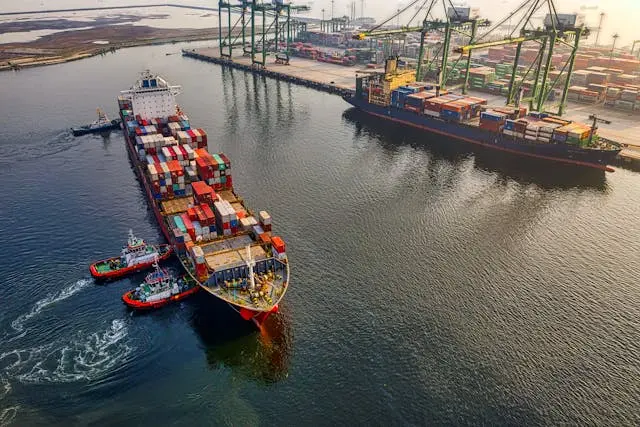Managing the market’s intricacies will call for a proactive approach that goes beyond simply responding to demands as the halfway point of 2024 draws near. It will be essential to prepare for and welcome them, particularly in the context of the difficult supply chain and procurement environments.
If the pandemic has taught us anything, it is that businesses must invest in more transparent, flexible, and sustainable processes and optimize resilience in order to assure corporate success and continuity. Although reaching this goal is not easy, it is feasible to improve service levels, boost income, and save expenses by using technology and effective supply chain management.
In the supply chain domain, technology functions similar to Prometheus’ fire, shedding light on management and increasing cost transparency and operational efficiency. It’s not by accident that 82% of procurement leaders surveyed for the Gartner research “Future Supply Chains: Resilience, Agility, Sustainability & Technology” in 2023 stated they want to make significant investments in technology over the next five years.
This investment is motivated by several factors, such as:
- The need to boost productivity and efficiency: Procurement managers may use technology to automate processes, make better decisions, and cut expenses.
- Enhanced supply chain visibility and control: Procurement managers can monitor the movement of materials and information, spot hazards, and pinpoint areas for improvement with the use of disruptive technologies.
- Fulfilling sustainability demands: procurement specialists can lessen the supply chain’s environmental impact with the use of technology.
However, technology alone is not sufficient. In order to adapt, innovate, and integrate new opportunities and tactics, as well as to ensure the successful and long-lasting implementation of such solutions, the human aspect will be essential. We’ll talk about several trends for 2024 in this post, with tips you can use for your company. The times have changed, and to avoid falling behind, you must adapt to the new reality.
Top 5 Supply Chain Trends in 2024
1. Increasing focus on process automation
The pursuit of accuracy and efficiency in the supply chain is closely associated with process automation, which uses technology to carry out operations without the need for direct human interaction. Disruptive technologies like machine learning will be enhanced and integrated as a strategic requirement in 2024 for businesses trying to streamline operations, cut expenses, and obtain a competitive edge.
Automation in this context is greatly aided by system integration, which enables effective communication between various software programs. Processes are accelerated, increased efficiency is brought about, and operational openness and compliance are encouraged.
Moreover, investing in automation technologies increases productivity, improves process precision, lowers the possibility of errors, and eliminates repetitious work, freeing up human resources for more strategic and valuable work.
2. Agile and responsive management
The pandemic has made it clear that the dynamic issues faced by supply chains cannot be adequately addressed by traditional approaches to risk management. Sustaining operational continuity will need the capacity to react quickly to risks.
Due to the increased susceptibility of many industries to natural disasters, geopolitical conflicts, and economic instability in recent years, the procurement sector must be prepared for unanticipated events, minimize any negative effects from the outside world, and maintain the resilience necessary to maintain the integrity of its supply chains.
3. Data: the new oil
While the analogy between data and oil is not new, data’s position at the center of decision-making is undeniable since it plays a critical strategic role in the digital supply chain management process.
Data analysis is expected to play a central role in company decisions by 2024, leveraging historical performance to forecast future circumstances and guide decisions. Structured data analysis skills are essential for improving operational effectiveness as well as resilience and agility in a highly competitive and dynamic company environment.
4. The power of collaboration
In 2024, supplier and buyer cooperation will become even more essential in the networked supply chain ecosystem. It’s feasible to predict market dynamics and volatility with good communication.
In order to ensure effective communication with suppliers, partnerships between the different supply chain participants and secure information exchange will be required. This means that information about requests, unanticipated events, and forecasts will be shared via integrated and moral systems, creating a setting that is favorable to all the links.
5. The human connection is transforming the service layer
The success of supply chains will always depend on human capital, even in the face of technological advancement. Investing in resources that combine technology and human aspects is the key to improved efficiency, agility, and innovative solutions to the difficulties facing the industry.
According to predictions, in 2024, one cannot undervalue the importance of human creativity, adaptability, and inventiveness in the age of disruptive technology. In other words, striking the correct balance between technology and human connection is vital for achieving effective supply chain management.
Businesses that manage their supply chains in line with these digital and behavioral trends in 2024 will be well-positioned to meet the demands of the global market and differentiate themselves in a constantly changing ecosystem. Because of this, the procurement sector requires experts who can take the initiative now more than ever in this highly disruptive environment.
Did you find this article interesting? Make sure you distribute to your network. Let’s work together to transform the supply chain and logistics sectors with 3PL Links!



